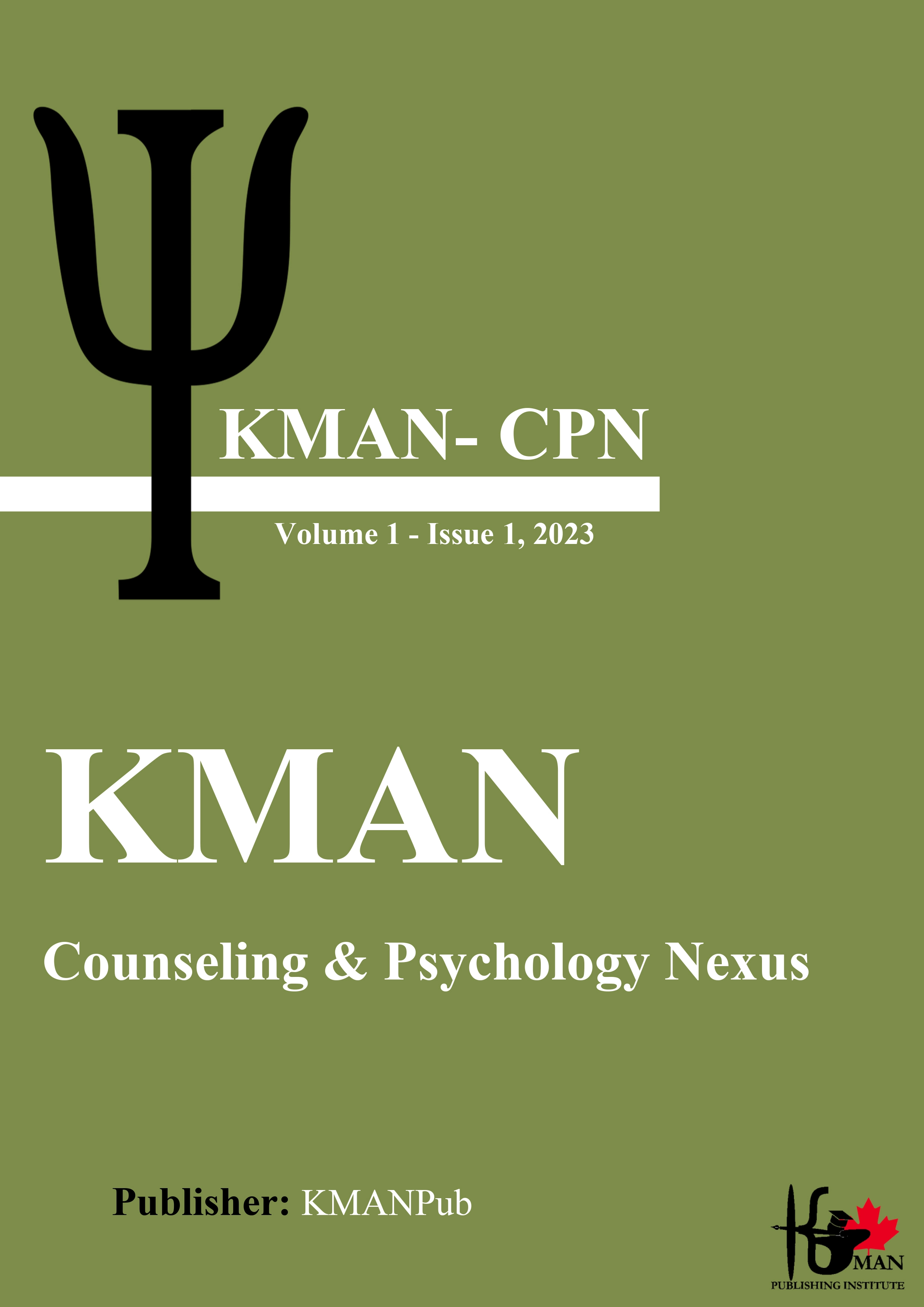Predicting Behavioral Problems in Students with Intellectual Disability Based on Maternal Acceptance and Resilience: The Mediating Role of Aggression
Keywords:
Resilience, Acceptance, Behavioral Problems, Intellectual Disability, AggressionAbstract
This study aimed to predict behavioral problems in students with intellectual disabilities based on maternal acceptance and resilience, with the mediating role of aggression. The present study is descriptive in nature and was conducted using a correlational approach based on structural equation modeling. The statistical population consisted of all students with intellectual disabilities enrolled in special education schools under the Exceptional Education Organization in Shiraz during the 2023–2024 academic year. The sampling method was simple random selection, and a total of 127 students were chosen as the final sample. Among the final sample participants, 70.1% were boys, and 29.9% were girls. Data collection instruments included the Conners' Parent Rating Scale—Short Form for behavioral problems, the Connor-Davidson Resilience Scale (2003), the Acceptance and Action Questionnaire developed by Hayes, Baer, Carpenter, Gönül, Zettle, and colleagues (2011), and the Buss and Perry Aggression Questionnaire (1997). Data analysis was performed using SPSS version 16 and SmartPLS software. The study findings indicated a significant negative relationship between maternal acceptance and resilience and behavioral problems in students with intellectual disabilities. Additionally, these two variables significantly and negatively predicted behavioral problems in these students. Based on the findings, it can be inferred that early maternal acceptance and resilience can serve as predictive factors for behavioral problems in students with intellectual disabilities.
Keywords: Resilience, Acceptance, Behavioral Problems, Intellectual Disability, Aggression
Downloads
References
Ahar, H. G. M. (2024). Psychological-Cognitive Tests for Children for Child Counseling. Be Nashr. https://torob.com/p/1d25a3c3-3e0d-4bd9-af69-8d33d13bb82f/%D8%A7%D8%B2%D9%85%D9%88%D9%86%D9%87%D8%A7%DB%8C-%D8%B1%D9%88%D8%A7%D9%86%DB%8C-%D8%B4%D9%86%D8%A7%D8%AE%D8%AA%DB%8C-%DA%A9%D9%88%D8%AF%DA%A9%D8%A7%D9%86-cat-and-bender-%D8%A8%D8%B1%D8%A7%DB%8C-%D9%85%D8%B4%D8%A7%D9%88%D8%B1%D9%87-%DA%A9%D9%88%D8%AF%DA%A9/
Armstrong Arons, P. (2022). Middle management communication and interaction practices and their influence on employee satisfaction and motivation. A Dissertation Presented in Partial Fulfillment of the Requirements for the Degree Doctor of education in educational leadership university of phoenix, 69-80. https://www.academia.edu/36244723/
Baniasadi, T. (2024). Comparison of Executive Function and Working Memory among Children with High and Low Levels of Physical Activity. International Journal of Education and Cognitive Sciences, 5(3), 9-15. https://doi.org/10.61838/kman.ijeas.5.3.2
Barrios-Fernández, S., Carlos‐Vivas, J., Muñoz-Bermejo, L., Mendoza-Muñoz, M., Apolo-Arenas, M. D., Gómez, A. G., Delgado, M. G., & Adsuar, J. C. (2022). Effects of Square-Stepping Exercise on Motor and Cognitive Skills in Autism Spectrum Disorder Children and Adolescents: A Study Protocol. Healthcare, 10(3), 450. https://doi.org/10.3390/healthcare10030450
Battaglia, G., Agrò, G., Cataldo, P., Palma, A., & Alesi, M. (2019). Influence of a specific aquatic program on social and gross motor skills in adolescents with autism spectrum disorders: Three case reports. 4(2), 27. https://doi.org/10.3390/jfmk4020027
Brikend, R. (2018). Job satisfacyion a literature review. Management Research and Practice, 3(4), 77-86. https://mrp.ase.ro/no34/f7.pdf
Cheung, W. C. (2020). A longitudinal analysis of the relations between social, communication, and motor skills among students with autism University of Illinois at Urbana-Champaign]. https://pubmed.ncbi.nlm.nih.gov/34677754/
Delshad, M., Mirahmadpour, M., Mirzakhani, N., Hodavandkhani, F., & Nejati, V. (2024). The Relationship between Visual-Motor Integration and In-Hand Manipulation Skills with Handwriting Skills of First Grade Students in Tehran. Rehabilitation Medicine Quarterly, 1(3), 35-40. https://medrehab.sbmu.ac.ir/article_1100083_c3e9b2e09f37443e4196942e483318cc.pdf
Eston, K., Deepa, S., & Manisha, O. (2003). Interpersonal Communication Lifeblood of an Organization. The IUP Journal of Soft Skills, III(3 & 4), 33-41. https://www.researchgate.net/profile/Deepa-Sethi/publication/228271402_Interpersonal_Communication_Lifeblood_of_an_Organization/links/55af387808ae98e661a6fd03/Interpersonal-Communication-Lifeblood-of-an-Organization.pdf
Fami Tafreshi, F., Mohammadi, M. R., Sharifi Saki, S., Ahmadi, H., Karimi, R., & Aakhte, M. (2016). Effectiveness of Training Applied Behavior Analysis to Parents on Increasing Self-help of Children with Autism [Research]. Quarterly Journal of Child Mental Health, 3(1), 9-18. http://childmentalhealth.ir/article-1-109-en.html
Fitzpatrick, P., Romero, V., Amaral, J. L., Duncan, A., Barnard, H., Richardson, M. J., & et al. (2017). Evaluating the importance of social motor synchronization and motor skill for understanding autism. 10(10), 1687-1699. https://doi.org/10.1002/aur.1808
Hilton, C. L., Cumpata, K., Klohr, C., Gaetke, S., Artner, A., Johnson, H., & Dobbs, S. (2014). Effects of exergaming on executive function and motor skills in children with autism spectrum disorder: A pilot study. The American journal of occupational therapy, 68(1), 57-65. https://doi.org/10.5014/ajot.2014.008664
Mahmoodifar, E., & Sotoodeh, M. S. (2020). Combined transcranial direct current stimulation and selective motor training enhances balance in children with autism spectrum disorder. Perceptual and Motor Skills, 127(1), 113-125. https://doi.org/10.1177/0031512519888072
Marzouk, H. K., Ahmed, F. A., & Elashry, R. S. (2022). Effectiveness of Cognitive-Behavioural Training Program on the Enhancement of Affective Communication Skills for Autistic Children. Assiut Scientific Nursing Journal, 10(28.), 66-76. https://doi.org/10.21608/asnj.2022.116384.1303
McKinney, A., Hotson, K. L., Rybicki, A., Weisblatt, E., Dias, C. S., Foster, J., Villar, S. S., Murphy, S., & Belmonte, M. K. (2020). Point OutWords: Protocol for a Feasibility Randomised Controlled Trial of a Motor Skills Intervention to Promote Communicative Development in Non-Verbal Children With Autism. Trials, 21(1). https://doi.org/10.1186/s13063-019-3931-1
Naderi, A., & Seif Naraghi, M. (2020). Research Methods and How to Evaluate Them in the Humanities "Growth and Strengthening of Perceptual-Motor Skills in Children", translated by Ali Hossein Sazmand and Seyed Mehdi Tabatabaei. https://ravabook.ir/%D8%B1%D9%88%D8%B4%D9%87%D8%A7%D9%8A-%D8%AA%D8%AE%D9%82%D9%8A%D9%82-%D9%88-%DA%86%DA%AF%D9%88%D9%86%DA%AF%D9%8A-%D8%A7%D8%B1%D8%B2%D8%B4%D9%8A%D8%A7%D8%A8%D9%8A-%D8%A2%D9%86-%D8%AF%D8%B1-%D8%B9%D9%84%D9%88%D9%85-%D8%A7%D9%86%D8%B3%D8%A7%D9%86%D9%8A
Rafiei Milajerdi, H., Sheikh, M., Najafabadi, M. G., Saghaei, B., Naghdi, N., & Dewey, D. (2021). The effects of physical activity and exergaming on motor skills and executive functions in children with autism spectrum disorder. Games for Health Journal, 10(1), 33-42. https://doi.org/10.1089/g4h.2019.0180
Redquest, B., Bryden, P. J., & Fletcher, P. C. (2020). Social and Motor Skills of Children and Youth With Autism From the Perspectives of Caregivers. Advances in Autism. https://doi.org/10.1108/aia-01-2020-0008
Sarabzadeh, M., Azari, B. B., & Helalizadeh, M. (2019). The effect of six weeks of Tai Chi Chuan training on the motor skills of children with Autism Spectrum Disorder. Journal of bodywork and movement therapies, 23(2), 284-290. https://doi.org/10.1016/j.jbmt.2019.01.007
Talebi, F. S., Namazizadeh, M., Mokhtari, P., & Mohammadian, F. (2024). The Effect of Selected Elementary School Games on Perceptual-Motor and Social Development of 8-9 Year Old Girls. Research in Rehabilitation Sciences, 7(5 (Special Issue)), 661-673. https://elmnet.ir/doc/10550366-27841
Todd, T. (2012). Teaching motor skills to individuals with autism spectrum disorders. Journal of Physical Education, Recreation & Dance, 83(8), 32-48. https://doi.org/10.1080/07303084.2012.10598827
Tohidi Manesh, Z., Farokhi, N., Asadzadeh, H., & Sharifi Daramadi, P. (2022). Evaluating the effectiveness of an educational program based on applied behavior analysis on the social skills of high-functioning children with autism. Exceptional Children (Research in Exceptional Children), 22(1), 115-130. https://joec.ir/browse.php?a_id=1300&sid=1&slc_lang=en
Wang, L. A., Petrulla, V., Zampella, C. J., Waller, R., & Schultz, R. T. (2022). Gross motor impairment and its relation to social skills in autism spectrum disorder: A systematic review and two meta-analyses. Psychological bulletin, 148(3-4), 273. https://doi.org/10.1037/bul0000358
Wang, Q., & Xu, L. (2023). Effectiveness of the Physical Intervention Using Sensory Integration Theory in the Recovery of Children With Autism. https://doi.org/10.21203/rs.3.rs-2914298/v1
Wei, T. (2023). The Factors, the Impact and Treatment for Autism Spectrum Disorders Among Children. Journal of Education, Humanities and Social Sciences, 8, 334-339. https://doi.org/10.54097/ehss.v8i.4270
Yaryari, F. (2020). Designing and Implementing an Educational Program to Rehabilitate Developmental Dyslexia in Students Aged 8-12 Tarbiat Modares University].

Downloads
Additional Files
Published
Submitted
Revised
Accepted
Issue
Section
Categories
License
Copyright (c) 2025 Raziyeh Jozari (Author); Sajede Moradi (Corresponding Author); Forough Khazraei, Zahra Taassob, Raziyeh Behrooz (Author)

This work is licensed under a Creative Commons Attribution-NonCommercial 4.0 International License.







